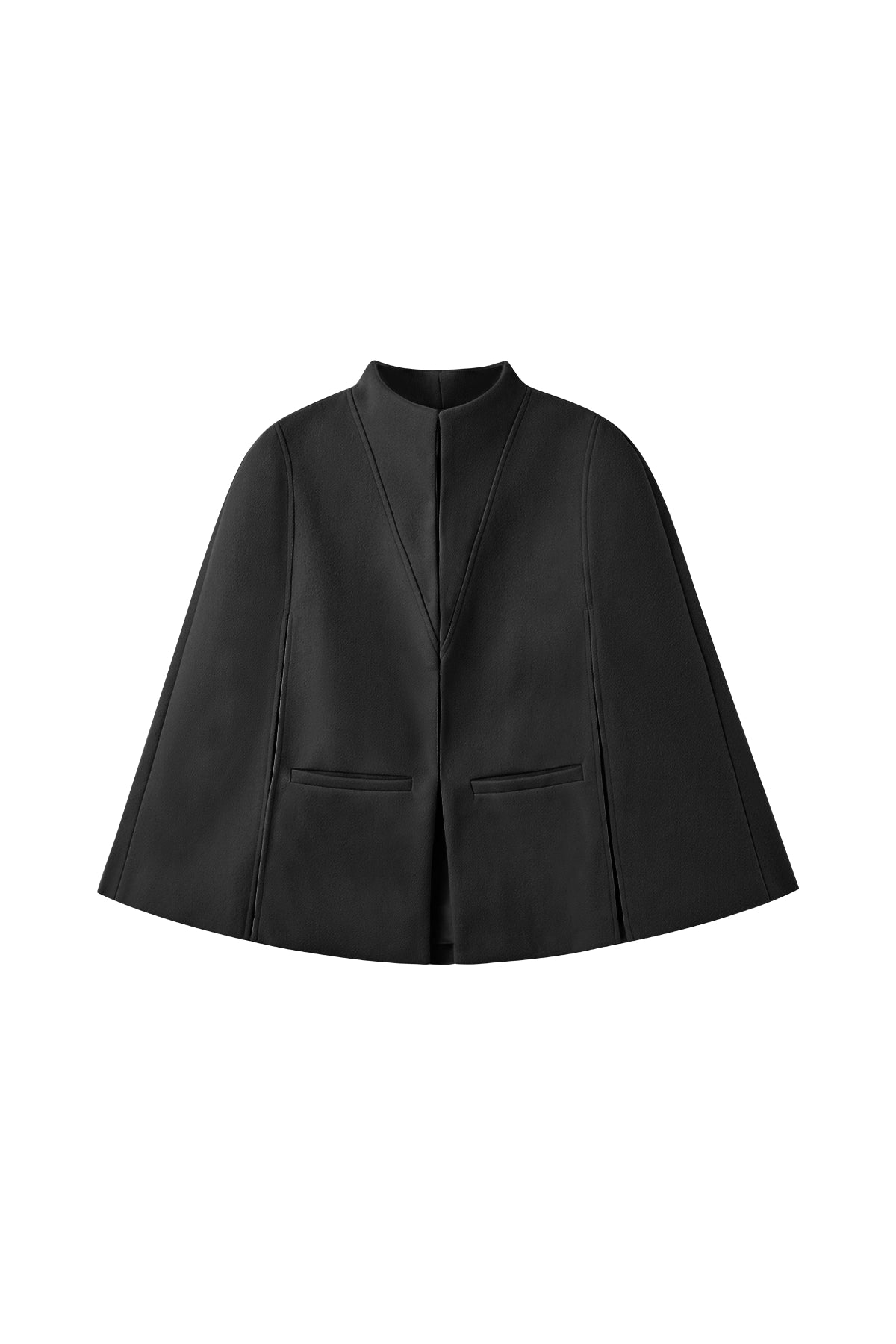Ready-to-wear blazers on the market rarely fit your body perfectly: the shoulder line may be slightly wide, the waist loose, and the sleeve length is not ideal… these small imperfections often make the jacket lose a bit of its polished look.
In fact, by mastering some simple alteration techniques, you can make an ordinary blazer fit like it was custom-made. Whether it’s taking in the waist, shortening the sleeves, converting a men’s blazer into a more feminine cut, or even creating a sleeveless vest version, every step can make your jacket better conform to your curves and highlight your unique style.
How to Alter a Women’s Blazer
Minor Alterations Applicable when the overall structure of the garment is good. Minor alterations do not require dismantling the entire blazer; only partial seams are opened, keeping the original structure intact. These include:
-
Adjusting darts: Make the bust, back, or waist fit more closely.
-
Taking in side seams: Improve a loose waistline.
-
Shortening sleeves: Achieve more proportionate length or expose 1–1.5 cm of shirt cuffs.
-
Front edge adjustment: Correct unevenness or prevent the front panels from flaring.
Major Alterations Applicable when the blazer’s structure or size differs significantly from the wearer’s body, such as:
-
Reshaping shoulders: Narrow the shoulders or adjust shoulder pad placement.
-
Restructuring pattern: Redefine waistline, bust, or back width proportions.
-
Replacing or trimming interfacing: When the original interfacing at the lapel or collar is too thick or deformed.
-
Relining: Necessary when the lining is too tight or damaged.
It is recommended to first open only half of the blazer to observe the internal structure; do not blindly dismantle the entire garment. Only alter one area at a time to maintain symmetrical control.
Preparation Before Alteration
Tools Checklist:
-
Measuring tape
-
Tailor’s chalk or fabric marker
-
Seam ripper
-
Pins & tailor clips
-
Steam iron & pressing cloth
-
Sewing machine and hand sewing tools
Structure Check:
-
Observe whether shoulder lines are aligned, lapels are symmetrical, and the lining has enough ease.
-
Check if the blazer has princess seams, which are convenient for subtle body shaping.
Detailed Step-by-Step Process
Step 1. Flip and Mark
-
Turn the blazer inside out and press along the original seams.
-
Use chalk to mark the new seam lines where adjustments are needed (side seams, back seams, or darts).
-
If adjusting both sides, measure and ensure symmetry (e.g., if taking in 1.2 cm on the left, do the same on the right).
Step 2. Open Seams and Pin
-
Gently open the lining with a seam ripper down to the underarm or hem, exposing only the seams to be adjusted.
-
Pin or clip along the new lines to keep the fabric flat and wrinkle-free.
-
Avoid inserting pins directly into interfacing; use tailor’s clips to prevent needle holes.
Step 3. Baste and Fit
-
Temporarily stitch along the marked line using basting stitch.
-
Try on the blazer to check fit; move your arms, lean forward, and sit to ensure freedom of movement.
-
Check that lapels are symmetrical, buttons centered, and shoulder lines remain straight.
Tip: The waist intake per side should generally be 1–2 cm; too much may cause side seam tension or lapel flaring.
Step 4. Sew Permanently
-
Once satisfied with the fit, sew along the basting lines with a sewing machine, stitch length 2.5–3 mm.
-
Trim excess seam allowance (leave ~1 cm) to prevent bulk.
-
For areas with interfacing, lightly thin the edges for a smooth transition.
Step 5. Press and Shape
-
Place a damp cloth over seams and press lightly (do not iron directly) to flatten the seam.
-
For wool or tweed fabrics, use a tailor’s ham to shape curves.
-
Finally, press the blazer from the outside to restore crisp structure.
Step 6. Reattach Lining
-
Sew the lining back in place using slip stitch.
-
Ensure the lining is slightly wider than the main fabric (~0.5 cm) to prevent pulling during movement.
Pro Tips & Fine Details
Shoulder Adjustments
-
If the shoulders are too wide but you don’t want to remove the sleeves, trim the shoulder pad thickness inside the seam.
-
If narrowing the shoulder line is necessary, adjust the sleeve cap curve at the same time; otherwise, the sleeve opening may pull.
Waist and Back Shaping
-
Use princess seams or back seams to shape naturally; taking only the side seams may cause bulging at the back.
-
To enhance curves, add a slight inward curve (~0.5 cm) along the back seam.
Hem and Lapel Balance
-
After side seam adjustments, check that the hem is still level.
-
If the lapel flares slightly, add a thin interfacing inside to reshape.
Pressing Tips
-
Press each seam after stitching to maintain a crisp blazer.
-
Do not use high heat directly on wool; use steam with a pressing cloth.
How to Take In a Woman’s Blazer
To make a women’s blazer more fitted and enhance the waistline, take in the side seams:
-
Turn the blazer inside out and carefully open the lining at the underarm or hem, exposing only the side seams.
-
Try on, button up, and pin along the sides where intake is needed, usually 1–2 cm per side, shaping gradually from the underarm to form a natural waistline.
-
Remove the blazer, mark with chalk, and baste to test fit. If no pulling, sew permanently.
-
Trim excess fabric, leaving ~1 cm seam allowance, and press along the seam for smooth lines.
-
Reattach the lining slightly wider than the outer fabric to prevent pulling. Ensure chest and underarm are not too tight, maintain symmetry, keep the lapel vertical and hem level. If the blazer has a back vent or princess seams, adjust them slightly for natural proportion.
-
Finally, steam-press the entire piece to restore crispness and structure.
How to Shorten a Woman’s Blazer
-
Parts that can be shortened:
-
Body length: create a cropped or modern cut.
-
Sleeve length: adjust for a neat, proportionate look.
-
Steps:
-
Measure and mark the desired new length with chalk or fabric marker, leaving 1–2 cm seam allowance for folding and stitching.
-
Remove the original hem and lining carefully using a seam ripper or small scissors; avoid cutting or pulling the fabric to prevent damage.
-
Trim excess fabric and fold the hem; press to set. For fraying fabrics, lightly overlock or stitch edges to prevent unraveling.
-
Sew the new hem with a machine or hand stitch, keeping even stitches; press the hem again for a clean finish.
-
Hand-stitch the lining back in place neatly; check that outer and inner layers are smooth and stitch lines are tidy.
How to Tailor a Men’s Blazer for a Woman
Adjustment Suggestions:
Shoulders & Armholes
-
Men’s blazers usually have shoulders 2–4 cm wider. Remove sleeves, take in the shoulder seams, and reattach sleeves to improve fit.
-
If the armhole is low, slightly raise the seam underarm for better mobility and shape.
Add Waist Contour
-
Men’s cuts are straight; take in 1–2 cm at side or back seams to create a slight inward curve at the waist.
-
If there are princess seams, adjust along the lines to better follow female curves.
Button Reversal
-
Women’s blazers usually have right-over-left closure. Adjust buttons and buttonholes for a more feminine look if desired.
Shorten Hemline
-
Men’s blazers are generally longer; shorten by 3–5 cm to land mid-to-upper hip, or fold and stitch the lining for a reversible short length.
Feminine Finishing Touches
-
Replace buttons with more delicate options (metal, shell, or covered buttons) or add narrow piping or topstitching to lapels and pockets to soften the masculine look.
Fit Check
-
After adjustments, ensure shoulders are natural, chest flat, lapels vertical.
-
If still stiff, use lighter shoulder pads or thin padding to soften the upper body.
How to Make a Women Blazer Vest
Check if a sleeveless version is feasible:
-
Suitable: simple shoulder structure, removable/adjustable pads, no heavy decorations, light to medium-weight draping fabric, simple silhouette, clear waistline, balanced shoulder-back proportion.
-
Unsuitable: complex/rigid shoulders, heavy or hard fabric, requires extensive interfacing, complex patterns or uneven shoulder-back proportion.
Steps:
-
Carefully remove sleeves, keeping the shoulder seam and armhole edge neat.
-
Finish armholes with bias tape or fabric edging.
-
Retain or adjust darts at bust, waist, and back for a fitted sleeveless silhouette.
-
Add lining and finish lapels; lining can enhance structure and prevent sagging. Keep lapel proportions intact for a clean front neckline.
Styling Tips: Layer over shirts, turtlenecks, or dresses.
Conclusion
Mastering blazer structure and tailoring techniques allows you to create a truly unique jacket. Start with simple adjustments like shortening sleeves or taking in the waist, gradually try full alterations or DIY variations, and ultimately achieve a personalized, perfectly fitting, timeless blazer. However, before attempting any modifications yourself, understand fabric grain, seam allowance, and appropriate steam temperature to avoid irreversible damage. This guide is for reference only; for high-value or cherished garments, it is recommended to entrust an experienced professional tailor to ensure optimal results and safety.




